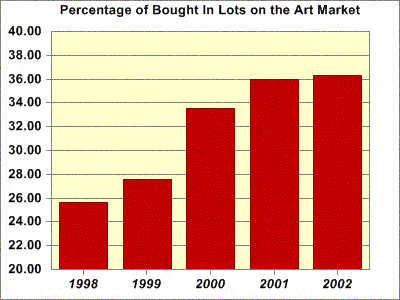No speculative bubble in the art market
[19 Jul 2002]
The price of artworks continues to climb. Some see this as the result of a speculative mood among investors. In fact it is no such thing. Investors are being highly selective in what they buy and this selectivity underpins the soundness of the market.
More than in any previous period of rising prices, analogies drawn with the recently crashed financial markets means the current uptrend in art prices is sometimes being interpreted as a speculative boom-i.e., prices are being artificially inflated as buyers rush to cash in on the profits promised by a bull market. Market theory holds that when prices rise sellers are tempted to put more artworks up for offer. Rising prices are thus accompanied by rising volumes. In the current art market, though, the supply of non-contemporary works is limited. And the temptation is to make up for the shortage of high-quality older works by offering collectors contemporary pieces of uncertain quality. If we were in a speculative boom, we would expect to see the rise in prices accompanied by a rise in the number of lots put up for auction, a fall in bought-ins as feverish demand snapped up these lots, an exceptional rise in hammer prices for contemporary works and a fall in the average quality of works sold. All these features marked the boom market of the late 80’s.
This year though the situation is very different. First, rising prices have not triggered a rush to resell. At the start of the season sellers were for a long time reluctant to put their works into a market still driven with uncertainty following September 11. As a result, transaction volumes actually fell in 2002. Also, as prices have risen buyers have become more demanding. Poor quality works generally fail to find a buyer. Collectors have never been as selective in their buying as they are now: over 36% of works offered for auction are left unsold. In 1998 the rate of bought-ins was just 25.6%. Prices may be climbing but the experts remain as careful as ever. And over-greedy sellers, who put in excessive reserve prices, are often left with nothing to show for it. It seems the lessons of 1990 are being taken to heart. More than ever, buyers understand a fair estimate of worth and draw on deep expertise before setting foot on the auction floor.
Unlike many shares offered on the stock market the rise in the prices of artworks is not artificial. As long as these market conditions persist the chances of a crash on the art market, one of the oldest markets in the world, are practically zero.





 0
0
